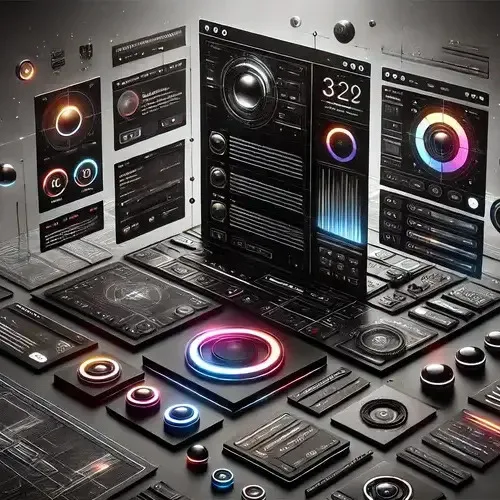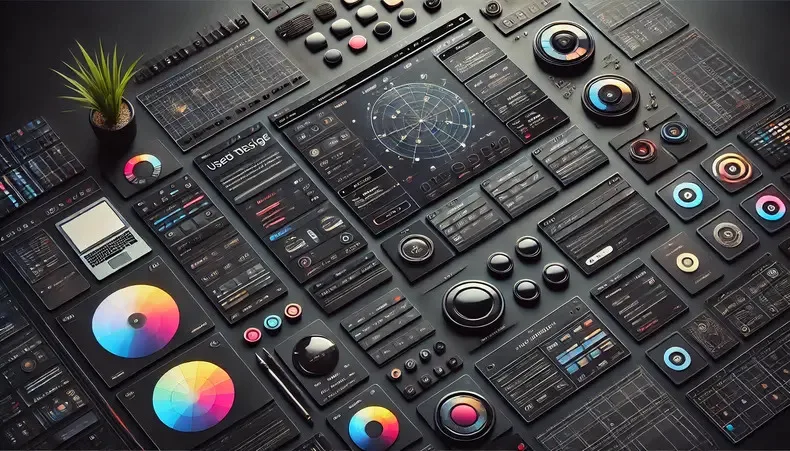
The Use of Dark Themes in Web Design: Pros and Cons
Dark themes have become a popular trend in web design, offering an elegant and modern aesthetic that many users find appealing. They are often chosen for their ability to enhance visual elements, reduce eye strain, and conserve device battery life. However, like any design choice, dark themes come with their own set of challenges. In this article, we will explore when it is worth using a dark theme, the advantages and disadvantages, and how to choose the right color palette to make the most of this design approach.
When Is It Worth Using a Dark Theme?
Dark themes can work well for websites that focus on visual content, such as photography, design portfolios, or entertainment platforms. They allow images and graphics to stand out against the background, creating a striking effect.
For businesses like Casino Kartáč, where the ambiance of luxury and entertainment is key, dark themes can create a sophisticated and immersive user experience. They help to direct attention to the content that matters most, whether it’s promotional banners, games, or important calls to action.
However, dark themes are not suitable for all websites. For content-heavy platforms or sites with large amounts of text, the readability and user experience can be negatively impacted. Understanding your audience and the purpose of your website is essential in determining whether a dark theme will enhance or hinder the user experience.
Pros of Using Dark Themes in Web Design
1. Aesthetic Appeal: Dark themes offer a sleek, modern, and often luxurious look, making them a popular choice for brands that want to appear cutting-edge and sophisticated.
2. Reduced Eye Strain: Especially in low-light conditions, dark themes are easier on the eyes, reducing strain and improving user comfort during prolonged usage.
3. Battery Efficiency: On OLED and AMOLED displays, dark themes can save battery life, which is an important factor for mobile users.
4. Highlighting Visual Content: Dark backgrounds can make images, videos, and other visual content pop, helping to draw user attention to key elements.
5. Focus on Content: By using a minimalistic dark background, designers can guide users’ attention to important information or interactive elements without distraction.

The Cons of Dark Themes in Web Design
1. Readability Issues: One of the major drawbacks of dark themes is the potential for poor readability, especially with long blocks of text. Improper contrast can make content difficult to read, frustrating users.
2. Limited Applicability: Dark themes don’t work well for all types of websites, particularly those that are information-heavy or rely on textual content.
3. Color and Contrast Challenges: Choosing the right color combinations for a dark theme can be tricky. Low contrast between background and text can make the design look flat and unappealing, while too much contrast can strain the eyes.
4. Compatibility Across Devices: Some devices and screen types may not display dark themes as intended, leading to inconsistency in the user experience across different platforms.
How to Choose the Right Color Palette for a Dark Theme
1. Contrast and Readability: The key to a successful dark theme is maintaining the right contrast. Ensure that text and interactive elements stand out from the background without being harsh on the eyes. Soft whites or light grays often work better than stark white on black.
2. Accent Colors: Using accent colors strategically can add vibrancy to a dark theme. For example, bright colors for buttons or interactive elements can create focal points and guide user actions.
3. Testing on Different Devices: Test your design on various devices to ensure that the dark theme looks good and functions well across different screen types and sizes.
4. Balanced Use of Shadows and Highlights: Dark themes can benefit from subtle shadowing to create depth and make content more distinguishable. Avoid overly flat designs that can make the user interface feel dull.
Dark themes are a powerful tool in web design, offering a stylish and modern look that can enhance visual content and improve user experience in certain contexts. However, they come with challenges, particularly in terms of readability and contrast. By carefully considering when and how to use a dark theme, and by selecting the right color palette, designers can create a visually striking and user-friendly website that aligns with the brand’s goals.
